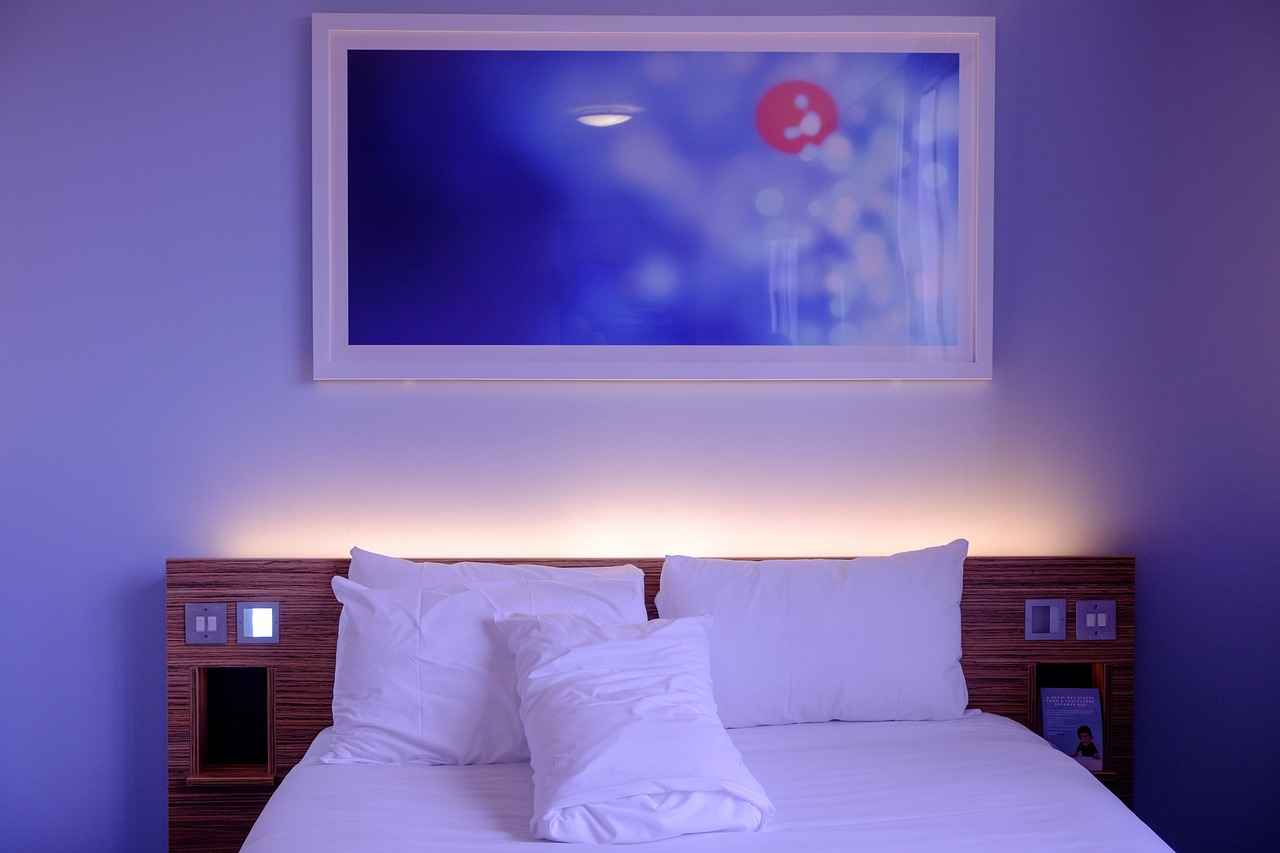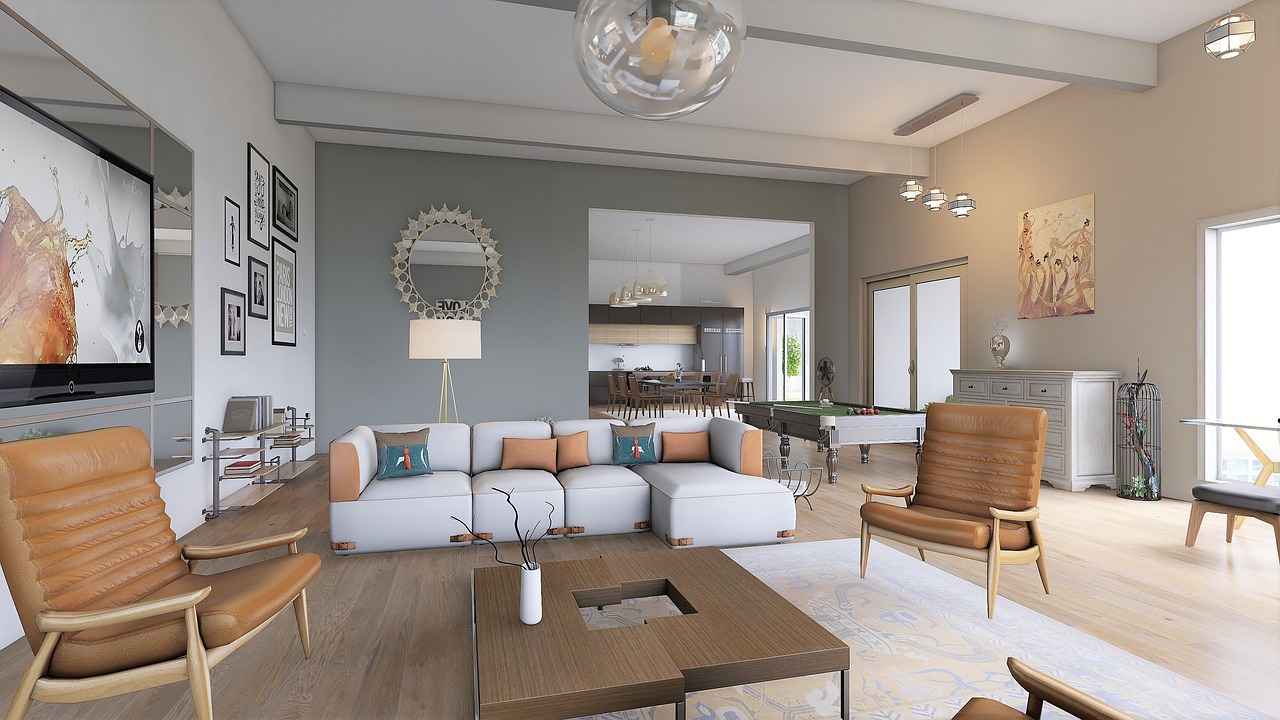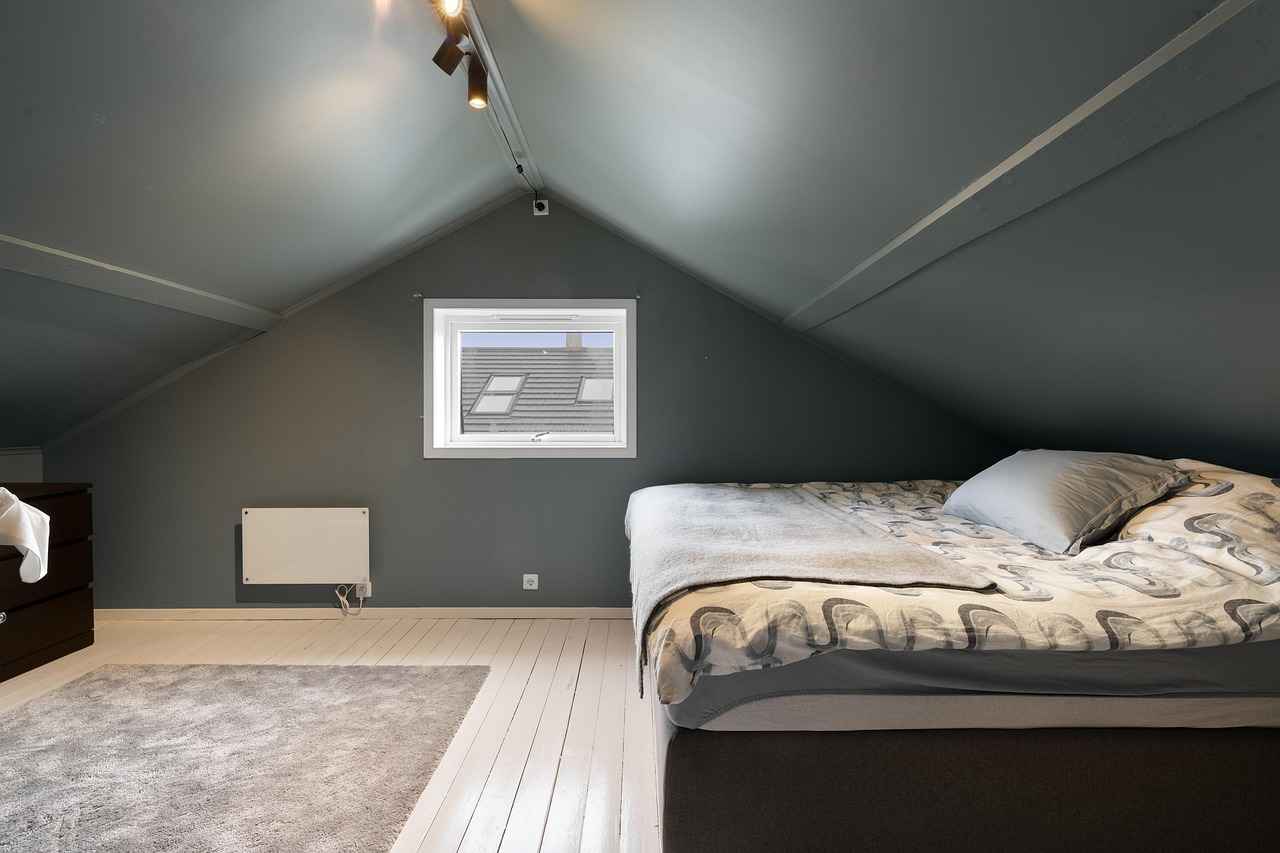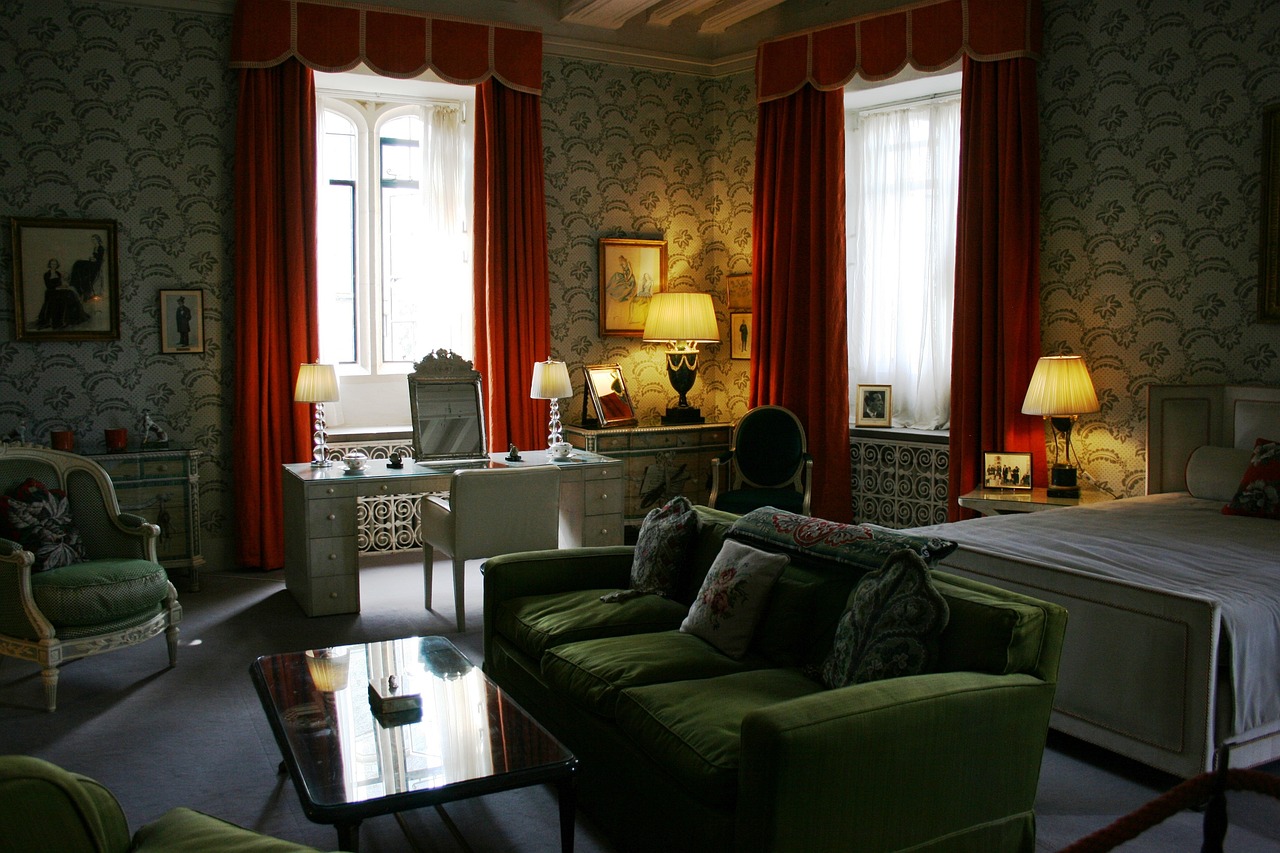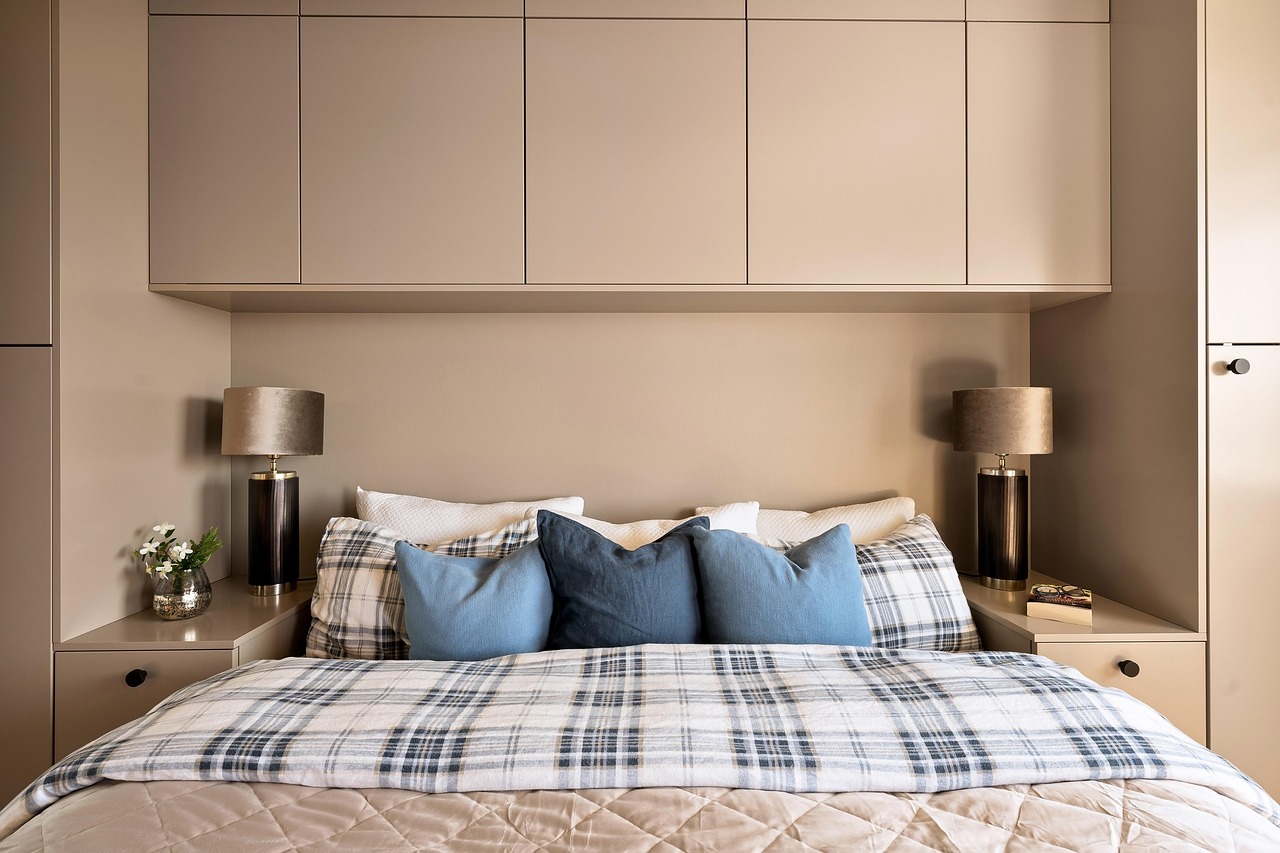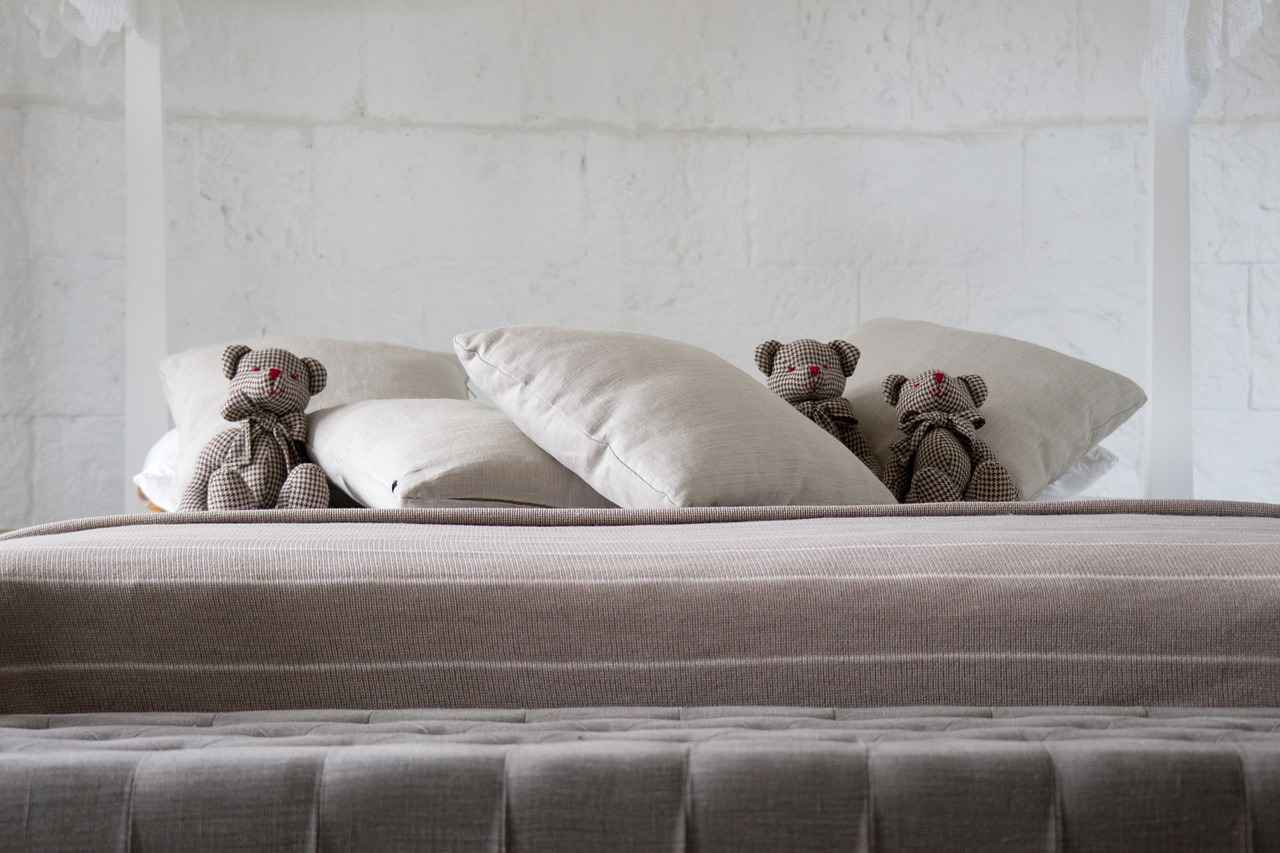This article explores various bed design styles that embody simplicity and elegance, perfect for enhancing the aesthetic of any room while providing practical insights and inspiration for your home decor.
When it comes to bed design, the choices can be overwhelming. However, by focusing on minimalism and functionality, you can create a serene and stylish bedroom environment. Minimalist bed designs often feature clean lines, neutral colors, and a focus on essential elements, allowing for a tranquil space that promotes relaxation.
Minimalist bed designs prioritize simplicity, often utilizing natural materials and unembellished shapes. This approach not only enhances the visual appeal but also encourages a clutter-free environment. By embracing the principles of minimalism, you can create a bedroom that feels open and inviting.
The choice of material significantly impacts both the aesthetic and durability of your bed. Here are some popular materials:
- Wood: Offers warmth and a timeless charm.
- Metal: Provides a sleek, modern look.
- Upholstered: Combines comfort with style.
Wooden bed frames are a classic choice that brings character to any room. Different types of wood, such as oak and pine, can influence the overall design. Solid wood frames are known for their durability, while engineered wood offers a more budget-friendly option.
Understanding the differences between solid and engineered wood is essential. Solid wood tends to be more durable and can last a lifetime, while engineered wood is often more affordable and can mimic the appearance of solid wood.
The finish of a wooden bed can dramatically change its appearance. Options like stains and paints can enhance the natural beauty of the wood, allowing you to customize your bed to fit your decor style.
Metal bed frames are celebrated for their industrial aesthetic and durability. They can be easily integrated into various design themes, from modern to rustic, making them a versatile choice for any bedroom.
Upholstered beds add a layer of luxury and comfort. When selecting an upholstered design, consider both fabric and color. Popular choices include linen, velvet, and faux leather, each offering unique textures and appearances.
Choosing the right fabric is crucial for both aesthetics and maintenance. Fabrics like velvet provide a plush feel, while faux leather offers easy cleaning and durability.
Color and patterns can dramatically influence the ambiance of a room. Selecting upholstery that complements your overall decor theme can create a cohesive look. Consider neutral tones for a calming effect or bold patterns to make a statement.
Storage beds are practical and stylish, offering hidden compartments for organization. Options like drawers and lift-up designs are perfect for maximizing space in smaller rooms, combining functionality with elegance.
A well-designed bedroom should reflect a cohesive aesthetic. Harmonizing your bed design with other furniture and decor elements creates a unified look that enhances the overall ambiance of the room.
Proper maintenance is key to preserving the beauty and functionality of your bed. Regular cleaning and care for different materials can ensure your bed remains a stunning centerpiece in your bedroom for years to come.

Understanding Minimalist Bed Designs
is essential for anyone looking to create a serene and uncluttered bedroom environment. Minimalist bed designs prioritize simplicity and functionality, often characterized by clean lines, neutral colors, and an overall sense of calm. This design philosophy is rooted in the belief that less is more, allowing for a tranquil space that promotes relaxation and rest.
At the heart of minimalist design is the principle of elimination. This means removing unnecessary elements that do not serve a purpose. In the context of bed design, this translates to a focus on essential features, avoiding ornate details and excessive embellishments. A minimalist bed frame might feature a simple platform design, a low-profile silhouette, or a straightforward headboard that complements the overall aesthetic of the room.
Color plays a significant role in minimalist bed designs. Neutral palettes dominate, with shades of white, beige, gray, and soft pastels creating a soothing backdrop. These colors not only enhance the feeling of space but also allow for versatility in decor. By choosing a neutral bed design, homeowners can easily incorporate various accent colors and textures through bedding, pillows, and wall art, maintaining a cohesive look without overwhelming the senses.
- Functionality: Minimalist designs emphasize practical features. Beds may include built-in storage options, such as drawers or compartments, maximizing space without compromising style.
- Materials: Common materials for minimalist beds include natural woods and metals. These materials provide durability while aligning with the clean aesthetic.
- Proportion: In minimalist design, the size and scale of the bed should harmonize with the room’s dimensions. A large, bulky bed in a small room can create a cluttered feel, whereas a sleek, low-profile bed enhances openness.
Moreover, the choice of bedding is equally important in achieving a minimalist look. Opting for high-quality, simple linens in solid colors or subtle patterns can enhance the overall aesthetic. Layering textures, such as a soft throw blanket or a few decorative pillows, can add warmth without detracting from the minimalist theme.
When it comes to accessories, minimalism advocates for thoughtful selection. Instead of overcrowding the space with decorative items, choose a few statement pieces that resonate with the overall design. A single piece of art above the bed or a carefully chosen bedside lamp can serve as focal points that draw the eye without overwhelming the space.
Incorporating minimalist bed designs into your home is not just about aesthetics; it’s about creating a lifestyle that values clarity and tranquility. By embracing these principles, individuals can cultivate a personal sanctuary that promotes relaxation and mental well-being. The minimalist approach invites you to reflect on what truly matters in your space, allowing for a more intentional and fulfilling living environment.
Ultimately, understanding minimalist bed designs is about more than just choosing a bed frame. It’s about adopting a mindset that prioritizes simplicity and functionality, creating a bedroom that embodies peace and harmony. As you explore your options, consider how each element contributes to the overall feel of your space, and remember that in minimalism, every choice counts.
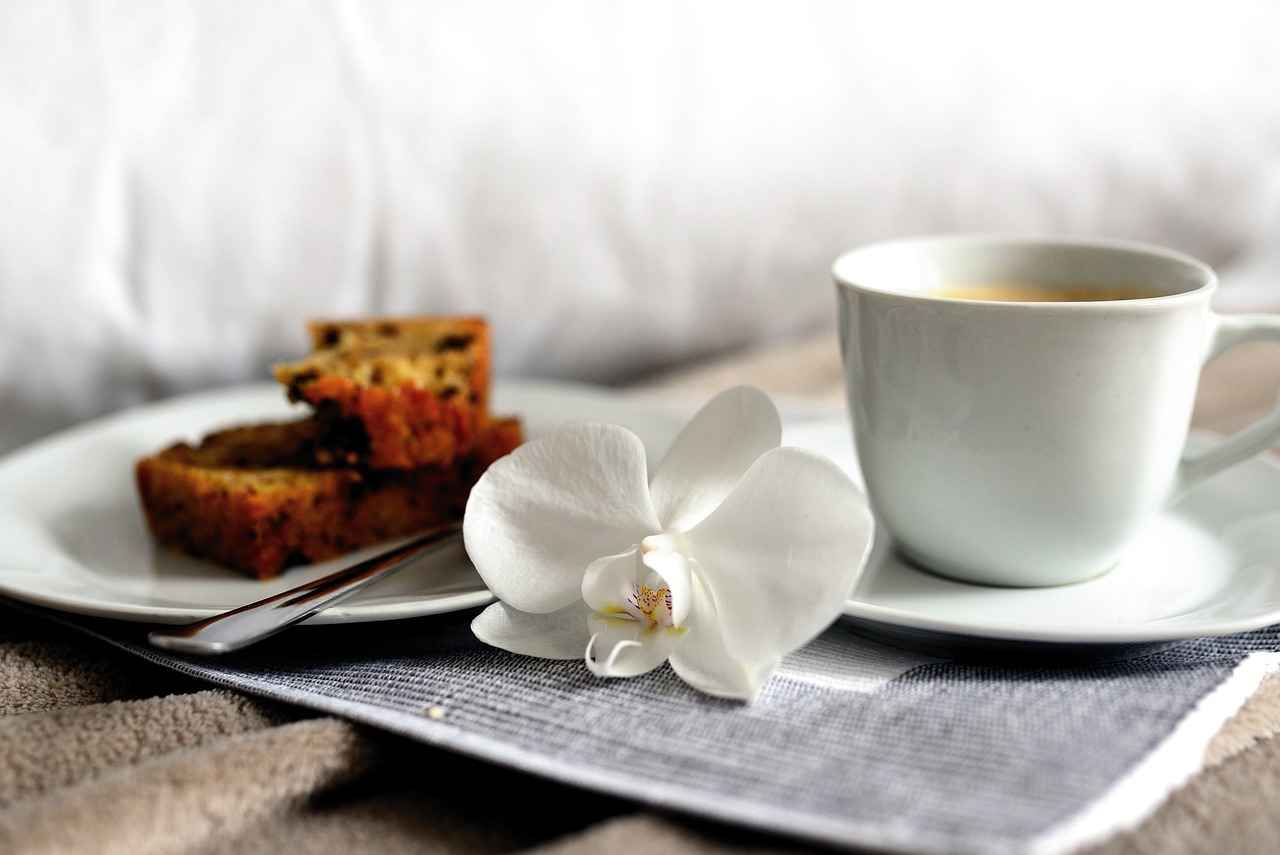
Choosing the Right Material for Your Bed
When it comes to selecting a bed frame, the material plays a crucial role in determining not only the aesthetic appeal of your bedroom but also the durability and overall functionality of the bed. With various options available, it’s important to understand the unique benefits and characteristics of each material. In this section, we will explore three popular choices: wood, metal, and upholstered bed frames.
Wooden bed frames have long been favored for their warmth and character. They can create a cozy atmosphere in any bedroom. Common types of wood used include oak, maple, and pine, each offering distinct textures and colors. For instance, oak is known for its durability and beautiful grain, while pine is a more affordable option that provides a lighter, airy feel.
When choosing a wooden frame, consider the difference between solid wood and engineered wood. Solid wood is generally more durable and can be refinished, while engineered wood is often more budget-friendly and resistant to warping. Understanding these differences can help you make an informed decision based on your budget and style preferences.
The finish of a wooden bed can dramatically change its appearance. Stains and finishes not only protect the wood but also enhance its natural beauty. Options range from light stains that highlight the grain to darker finishes that add a touch of elegance. Selecting the right finish can help your bed frame complement your overall decor.
Metal bed frames are known for their industrial look and sleek design. They are often made from materials like steel or iron, providing exceptional strength and longevity. Metal frames can easily fit into various design themes, from modern to eclectic, making them a versatile choice.
One of the primary benefits of metal bed frames is their durability. They are resistant to wear and tear, making them an excellent long-term investment. Additionally, metal frames are typically easier to assemble and move compared to wooden frames, offering greater flexibility in room layout.
Upholstered beds are a popular choice for those seeking a blend of luxury and comfort. These beds are often padded and covered with fabric, providing a soft touch that enhances the overall ambiance of the bedroom. Upholstered options come in a variety of styles, colors, and patterns, allowing for personalization.
Selecting the right fabric for your upholstered bed is crucial for both aesthetics and maintenance. Popular fabrics include linen, velvet, and faux leather. Each fabric has its own texture and care requirements, so consider your lifestyle and maintenance preferences when making a choice.
The color and pattern of your upholstered bed can significantly influence the room’s ambiance. Light colors can create a sense of space, while darker hues can add depth and drama. Patterns can also serve as a focal point, adding visual interest to the overall design.
In conclusion, choosing the right material for your bed frame is essential for achieving both style and functionality. By understanding the benefits of wood, metal, and upholstered options, you can select a bed frame that not only enhances your bedroom’s aesthetic but also meets your practical needs.
Wooden Bed Frames: A Timeless Choice
Wooden bed frames are often regarded as a timeless choice in bedroom design, seamlessly blending warmth and character into any space. Their natural beauty and durability make them a popular option among homeowners looking to create a cozy and inviting atmosphere. This section explores various types of wood, such as oak and pine, and their influence on overall design.
When selecting a wooden bed frame, the type of wood plays a crucial role in both aesthetics and functionality. Below are some popular choices:
- Oak: Known for its strength and longevity, oak is a hardwood that offers a classic look. Its natural grain patterns can add a touch of elegance to any bedroom.
- Pine: A softer wood, pine is lighter in color and typically more affordable. It is ideal for those seeking a rustic or shabby chic style.
- Walnut: This luxurious hardwood boasts a rich, dark color and unique grain. Walnut frames can serve as statement pieces in modern or traditional settings.
- Maple: Known for its fine grain and light color, maple is a versatile choice that complements various decor styles.
The choice of wood not only affects the durability of the bed frame but also its visual impact in the room. For instance, oak frames often convey a sense of stability and tradition, while pine frames can evoke a more casual and welcoming vibe. The finish applied to the wood also plays a significant role in enhancing its appearance. Natural finishes highlight the wood’s grain, while painted finishes can introduce bold colors into the space.
Understanding the differences between solid wood and engineered wood can help you make an informed decision. Solid wood frames are made from a single piece of timber, offering unparalleled durability and timeless appeal. In contrast, engineered wood is constructed from layers of wood fibers, making it more affordable and often lighter. However, it may not provide the same level of stability and longevity as solid wood.
The finish of a wooden bed can dramatically change its appearance. Popular finishes include:
- Stained Finishes: Enhance the natural grain and color of the wood while providing protection.
- Painted Finishes: Allow for a wide range of color options, enabling you to match your bed frame with your overall decor.
- Natural Finishes: Preserve the wood’s original look, showcasing its unique characteristics.
In conclusion, wooden bed frames offer a blend of beauty, functionality, and versatility. By understanding the various types of wood, their impact on design, and the differences between solid and engineered options, you can make an informed choice that enhances your bedroom’s aesthetic and provides lasting comfort.
Solid Wood vs. Engineered Wood
When it comes to choosing the perfect bed frame, understanding the differences between solid wood and engineered wood is crucial. Both materials offer unique benefits and drawbacks that can significantly impact your decision based on cost, durability, and style.
Solid wood is derived from a single piece of timber, making it a natural and durable choice. This type of wood is renowned for its strength and longevity, often lasting for decades with proper care. Solid wood frames can be crafted from various types of wood, including oak, maple, and cherry, each bringing its own distinct grain pattern and color. A major advantage of solid wood is its ability to be refinished, allowing for a fresh look over time. However, the cost of solid wood can be higher due to the quality of materials and craftsmanship involved.
On the other hand, engineered wood is made from a combination of wood fibers, adhesives, and other materials, which are fused together under heat and pressure. This process creates a product that is often more affordable than solid wood, making it an attractive option for budget-conscious consumers. Engineered wood is less susceptible to warping and cracking compared to solid wood, which can be advantageous in areas with fluctuating humidity. However, it may not offer the same level of durability as solid wood and can be more challenging to repair if damaged.
When considering cost, engineered wood typically comes at a lower price point, making it accessible for a wider range of consumers. Solid wood, while more expensive, is often viewed as a long-term investment due to its durability and timeless appeal. If you plan to keep your bed frame for many years, the initial higher cost of solid wood may be justified.
Durability is another critical factor to weigh. Solid wood is known for its robustness, often standing the test of time with proper maintenance. Engineered wood, while generally resistant to environmental changes, may not hold up as well under heavy use or in high-traffic areas. If you have children or pets, solid wood may be the better option for its resilience.
In terms of style, both materials can complement a variety of design aesthetics. Solid wood offers a classic and traditional look, showcasing natural beauty and craftsmanship. Engineered wood, with its versatility, can be finished in various styles and colors, making it easier to match with existing decor. Ultimately, the choice between solid and engineered wood will depend on your personal preferences and how you envision your bedroom space.
In summary, understanding the distinctions between solid wood and engineered wood can significantly influence your decision-making process when selecting a bed frame. Weighing the factors of cost, durability, and style will help you choose the best option that aligns with your needs and enhances your bedroom’s aesthetic.
Finishes and Stains for Wooden Beds
The finish of a wooden bed can dramatically change its appearance and overall aesthetic. Choosing the right stain or finish not only enhances the natural beauty of the wood but also allows it to seamlessly fit into various decor styles. In this section, we will explore the different types of finishes and stains available for wooden beds, their characteristics, and how they can transform your bedroom space.
Wood finishes can be broadly categorized into three main types: oil-based finishes, water-based finishes, and lacquer finishes. Each type has its unique properties and advantages:
- Oil-based finishes: These finishes penetrate deep into the wood, enhancing its natural grain and providing a warm, rich color. They are durable and resistant to wear but may take longer to dry.
- Water-based finishes: Known for their quick drying time and low odor, water-based finishes offer a clear and non-yellowing appearance. They are ideal for achieving a more modern look.
- Lacquer finishes: Lacquer provides a high-gloss finish that is both durable and easy to apply. It dries quickly and creates a hard surface, making it suitable for high-traffic areas.
Stains are essential for altering the color of the wood while still showcasing its natural beauty. There are various types of stains to consider:
- Gel stains: These stains are thicker and can be applied to vertical surfaces without running. They provide a uniform color and are excellent for achieving a deep, rich finish.
- Liquid stains: Traditional liquid stains penetrate the wood and can create a range of effects, from light to dark shades. They are versatile and can be layered for a more complex look.
- Transparent stains: These stains enhance the wood’s natural hue without completely altering its appearance. They are perfect for those who want to maintain the original character of the wood.
When selecting a stain or finish, it’s essential to consider your overall decor style:
- Rustic or farmhouse: Opt for darker stains like walnut or mahogany to create a warm, inviting atmosphere.
- Modern or contemporary: Lighter finishes such as ash or natural wood tones work well to maintain a sleek and airy feel.
- Traditional: Rich, deep stains can add a sense of elegance and sophistication to classic designs.
To achieve the best results when applying stains and finishes, consider the following tips:
- Always sand the wood surface thoroughly before applying any finish to ensure a smooth application.
- Test the stain on a small, inconspicuous area to see how the wood reacts before committing to the entire piece.
- Apply multiple coats if necessary, allowing adequate drying time between each coat to achieve the desired depth of color.
In conclusion, the right finish and stain can elevate the design of your wooden bed, enhancing its beauty and ensuring it complements your home decor. By understanding the different types of finishes and stains available, you can make an informed decision that best suits your style and needs.
Metal Bed Frames: Sleek and Modern
Metal bed frames have gained immense popularity in modern interior design, celebrated for their sophisticated and industrial aesthetic. These frames not only serve as a stylish centerpiece in a bedroom but also offer a myriad of practical benefits that make them a preferred choice for many homeowners.
One of the most significant advantages of metal bed frames is their durability. Unlike wooden frames, which can warp or crack over time, metal frames are built to last. They can withstand considerable weight and resist wear and tear, making them an excellent long-term investment. This robustness ensures that metal frames maintain their structural integrity, providing a stable and secure sleeping environment.
Another remarkable feature of metal bed frames is their versatility. They seamlessly fit into various design themes, from industrial and modern to minimalist and retro. The sleek lines and shiny finishes of metal frames can complement a wide range of color palettes and decor styles. Whether your bedroom is adorned with vibrant colors or a muted, monochromatic scheme, a metal bed frame can enhance the overall aesthetic.
Metal bed frames are generally lighter than their wooden counterparts, making them easier to move and rearrange. This feature is particularly beneficial for those who enjoy frequently updating their bedroom layout or for individuals who relocate often. The mobility of metal frames allows for effortless transitions without the strain associated with heavier furniture.
When it comes to cost-effectiveness, metal bed frames often come out on top. They are typically more affordable than wooden frames, making them accessible to a broader audience. Additionally, their longevity and low maintenance requirements translate to value for money, as they do not require frequent replacements or repairs.
Maintaining a metal bed frame is a straightforward process. Unlike upholstered or wooden frames, which may require special cleaning products or techniques, metal frames can be easily wiped down with a damp cloth to remove dust and stains. This low-maintenance aspect appeals to busy individuals who prefer a hassle-free cleaning routine.
Metal bed frames are compatible with a wide range of mattresses, including memory foam, innerspring, and latex options. This compatibility allows homeowners to choose the mattress that best suits their comfort needs without worrying about frame restrictions. Furthermore, many metal frames come with built-in slats or support systems, eliminating the need for a box spring.
In summary, metal bed frames present an array of benefits that make them a compelling choice for modern bedrooms. Their durability, versatility, and affordability cater to a variety of preferences and needs. As you consider your options for bed frames, keep in mind the practical insights shared here, and explore the stylish possibilities that metal frames can bring to your home.

Upholstered Beds: Combining Comfort and Style
Upholstered beds are a popular choice for many homeowners seeking to enhance the comfort and aesthetic appeal of their bedrooms. These beds not only provide a luxurious feel but also serve as a versatile design element in any sleeping space. In this section, we will explore the benefits of upholstered designs and offer guidance on selecting the right fabric and color to suit your personal style.
- Enhanced Comfort: Upholstered beds typically feature padded headboards and frames, making them more comfortable for activities such as reading or watching TV in bed.
- Design Versatility: Available in a myriad of styles, shapes, and colors, upholstered beds can seamlessly fit into various decor themes—from modern to traditional.
- Sound Absorption: The fabric used in upholstered beds can help absorb sound, creating a quieter and more serene sleeping environment.
- Personalization: With countless fabric options, you can customize your upholstered bed to reflect your unique taste and personality.
When selecting upholstery for your bed, consider both durability and aesthetic appeal. Here are some popular fabric choices:
- Linen: Known for its breathability and natural texture, linen is a great choice for a relaxed and casual look.
- Velvet: This luxurious fabric adds a touch of elegance and sophistication, perfect for a more opulent bedroom style.
- Faux Leather: For a modern and chic appearance, faux leather is a durable option that is easy to clean and maintain.
The color and pattern of your upholstered bed can significantly influence the overall ambiance of your room. Here are some tips for selecting the right combinations:
- Neutral Tones: Opt for soft, neutral colors like beige or gray for a calming effect that complements other decor elements.
- Bold Patterns: If you want to make a statement, consider patterned upholstery that adds visual interest and character to your bedroom.
- Accent Colors: Use your bed as a focal point by choosing a fabric that incorporates accent colors found in other furnishings or decor.
To ensure the longevity of your upholstered bed, regular maintenance is essential. Here are some practical tips:
- Regular Cleaning: Vacuum your bed periodically to remove dust and debris. For stains, use a fabric cleaner recommended for your specific upholstery type.
- Protective Treatments: Consider applying a fabric protector to guard against spills and stains, especially if you have pets or children.
- Rotate Your Mattress: Regularly rotating your mattress can help prevent uneven wear and prolong its lifespan.
In summary, upholstered beds are an excellent choice for those looking to combine comfort and style in their bedroom. By understanding the benefits, choosing the right fabric and color, and maintaining your bed properly, you can create a beautiful and inviting sleeping space that reflects your personal style.
Choosing the Right Upholstery Fabric
When it comes to creating a cozy and inviting bedroom, for your upholstered bed is essential. The fabric not only impacts the overall aesthetics of your bedroom but also affects maintenance and durability. This section explores popular upholstery fabrics, including linen, velvet, and faux leather, providing insights into their unique characteristics and practical considerations.
Linen is a natural fabric made from the fibers of the flax plant. Known for its breathability and moisture-wicking properties, linen is an excellent choice for warmer climates. Its textured surface adds a touch of casual elegance to any bedroom decor. Additionally, linen is highly durable and becomes softer with each wash, making it an appealing option for those who appreciate comfort and style. However, it is important to note that linen can wrinkle easily, so regular maintenance is required to keep it looking its best.
For a touch of luxury, velvet is an exceptional choice. This fabric is known for its soft, plush texture that adds depth and richness to any upholstered bed. Available in a variety of colors, velvet can complement both modern and traditional decor styles. While it offers a stunning visual appeal, it is essential to consider its maintenance needs. Velvet can attract dust and pet hair, so regular vacuuming and occasional professional cleaning are recommended to maintain its appearance. Additionally, velvet may be less suitable for high-traffic areas due to its delicate nature.
Faux leather, or synthetic leather, is an increasingly popular choice for upholstered beds due to its affordability and versatility. This material mimics the look of genuine leather while being more resistant to stains and spills. Faux leather is easy to clean, making it an ideal option for families or those with pets. It is available in various textures and finishes, allowing you to achieve the desired aesthetic without compromising on practicality. However, it is important to consider the quality of faux leather, as lower-quality options may wear out more quickly.
When selecting the right upholstery fabric for your bed, several factors should be taken into account:
- Durability: Consider the wear and tear the fabric will experience. For high-use areas, opt for more durable materials.
- Maintenance: Evaluate how much time you are willing to invest in cleaning and caring for the fabric.
- Color and Pattern: Choose colors and patterns that align with your overall bedroom decor and personal style.
- Comfort: Ensure the fabric feels comfortable against the skin, especially if you enjoy lounging in bed.
Ultimately, the right upholstery fabric can transform your bed into a stunning focal point while providing the comfort and functionality you desire. By understanding the unique properties of linen, velvet, and faux leather, you can make an informed decision that enhances both the beauty and practicality of your bedroom.
Designing with Color and Patterns
Color and patterns can dramatically influence the ambiance of a room. When it comes to upholstery, the right choices can enhance your decor and create a cohesive look. In this section, we provide insightful tips on selecting upholstery that complements your overall decor theme.
- Understanding Color Psychology: Colors evoke emotions and can set the mood of a space. For instance, warm colors like reds and oranges can create a cozy atmosphere, while cool colors such as blues and greens promote calmness. Consider the emotional impact you want your room to have when choosing upholstery colors.
- Choosing Patterns Wisely: Patterns can add visual interest to your space, but they need to be chosen carefully. Floral patterns work well in traditional settings, while geometric designs can enhance a modern aesthetic. Ensure that the pattern complements other elements in the room, such as wall colors and furniture styles.
- Balancing Bold and Subtle: If you opt for bold colors or patterns, balance them with neutral tones to avoid overwhelming the space. For example, a vibrant patterned sofa can be paired with solid-colored cushions or a muted rug to create harmony.
- Mixing Textures: Texture plays a crucial role in upholstery design. Combining different textures, such as a velvet sofa with linen cushions, can add depth and intrigue to your decor. Ensure that the textures you choose align with the color scheme for a cohesive look.
- Seasonal Considerations: Consider how colors and patterns can change with the seasons. Lighter fabrics and colors may be more suitable for spring and summer, while darker hues can create a warm, inviting feel in fall and winter. This approach can keep your decor feeling fresh throughout the year.
Practical Tips for Upholstery Selection
1. Sample Swatches: Always request fabric samples to see how colors and patterns look in your space.2. Lighting: Consider how natural and artificial lighting affects color perception in your room.3. Durability: Choose upholstery fabrics that are durable and easy to clean, especially in high-traffic areas.4. Style Consistency: Ensure that the upholstery style aligns with the overall decor theme of your room.
By thoughtfully selecting colors and patterns for your upholstery, you can create a space that reflects your personal style while enhancing the overall aesthetic of your home. Remember, the key is to balance bold choices with subtle elements, ensuring that everything works together harmoniously.
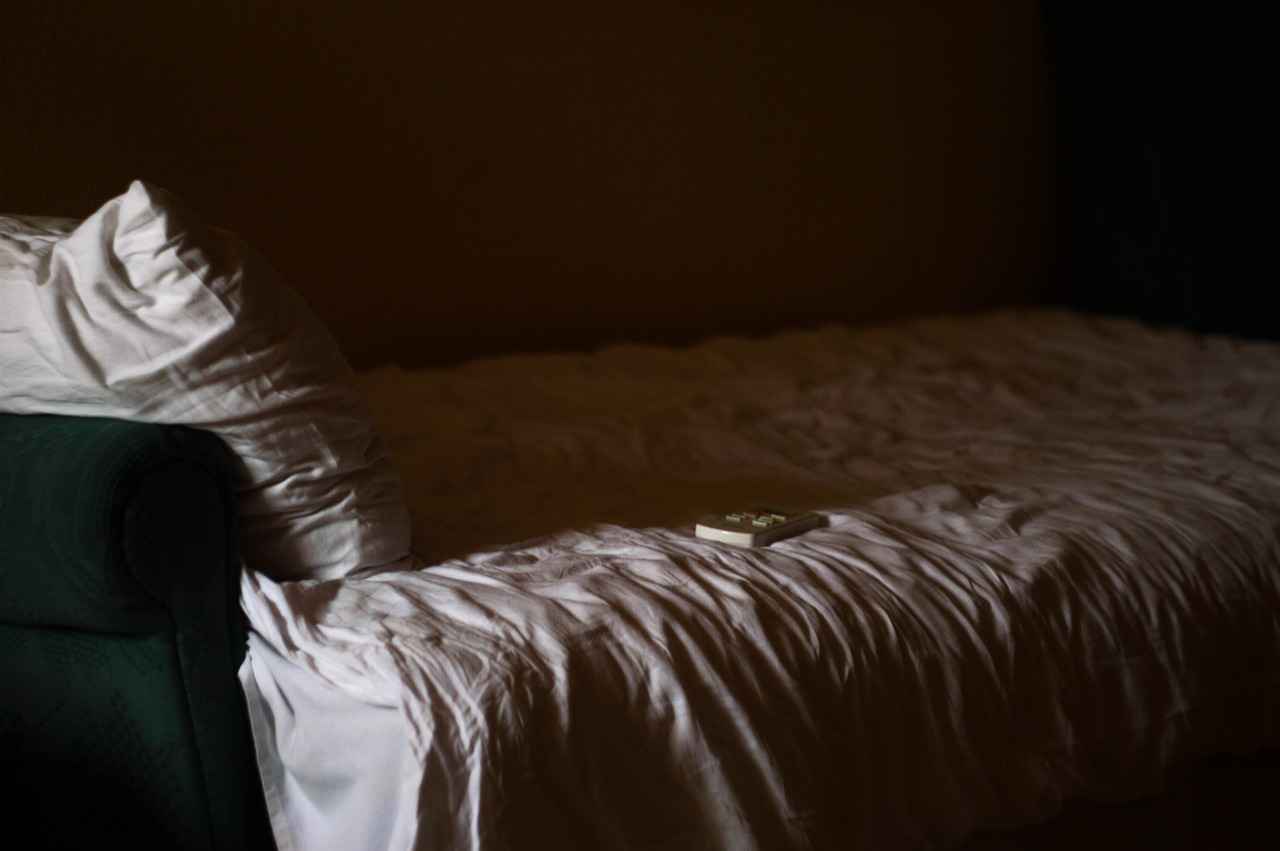
Integrating Storage Solutions in Bed Designs
In today’s modern living spaces, maximizing functionality without compromising on style is essential. Storage beds are an innovative solution that bridges this gap, providing both practicality and aesthetic appeal. This section delves into the various storage options available in bed designs, highlighting how they can enhance your bedroom experience while keeping it organized.
Understanding Storage Beds
Storage beds are designed with built-in compartments that allow you to store items out of sight, making them ideal for smaller rooms or for those who appreciate a clutter-free environment. These beds come in various styles, ranging from traditional to contemporary, ensuring there is a perfect match for any decor.
Types of Storage Solutions
- Drawers: Many storage beds feature drawers integrated into the frame. These drawers can be located underneath the bed or on the sides, providing easy access to stored items such as linens, clothing, or personal belongings. The number of drawers can vary, allowing for customization based on your storage needs.
- Lift-Up Designs: Another popular option is the lift-up bed design. This type of bed has a hinged mattress that lifts to reveal a spacious storage area underneath. This design is particularly beneficial for storing larger items, such as seasonal clothing or extra bedding, and is often used in platform beds.
- Headboard Storage: Some beds come with headboards that include built-in shelves or compartments. This feature is perfect for keeping books, alarm clocks, or decorative items within easy reach while maintaining a clean look.
Benefits of Storage Beds
Incorporating a storage bed into your bedroom design offers numerous advantages:
- Space-Saving: Storage beds are an excellent solution for maximizing space, especially in smaller rooms where every square inch counts.
- Organization: With designated storage areas, you can keep your bedroom tidy and organized, reducing clutter and creating a serene environment.
- Versatility: Available in various styles and finishes, storage beds can complement any decor theme, from modern to rustic.
Choosing the Right Storage Bed
When selecting a storage bed, consider the following factors:
- Size: Ensure the bed size fits your room and meets your storage requirements.
- Material: Choose a material that aligns with your style preferences and is durable enough for daily use.
- Accessibility: Consider how easy it is to access the storage compartments. Lift-up designs may require more effort than drawers, so think about what works best for you.
Conclusion
Storage beds offer a unique blend of style and functionality, making them a smart choice for any bedroom. By understanding the different storage options available and their benefits, you can select a design that enhances your space while keeping it organized. Whether you opt for drawers, lift-up designs, or headboard storage, integrating a storage bed can transform your bedroom into a more efficient and aesthetically pleasing sanctuary.

Creating a Cohesive Bedroom Aesthetic
A well-designed bedroom is more than just a place to sleep; it is a sanctuary that reflects your personal style and promotes relaxation. Achieving a cohesive aesthetic in your bedroom involves harmonizing your bed design with other furniture and decor elements. Here are some effective tips to create a unified look that enhances the overall ambiance of your space.
- Consider a Color Palette: Start by selecting a color palette that resonates with your personality. Aim for three to five complementary colors that can be used throughout the room. This will help create a sense of unity and flow.
- Match Materials: The materials of your bed frame, nightstands, and other furniture should work together. For example, if you choose a wooden bed frame, consider wooden nightstands or dressers in similar finishes to tie the room together.
- Incorporate Textures: Mixing textures adds depth to your design. Pair smooth surfaces with rougher textures, such as a plush duvet on a sleek metal bed frame. This contrast creates visual interest while maintaining cohesion.
- Use Coordinated Accessories: Accessories such as throw pillows, blankets, and artwork should echo your chosen color palette and materials. For instance, if your bed is upholstered in a soft fabric, consider using similar fabrics in your cushions or curtains.
- Keep Scale in Mind: Ensure that the size of your bed is proportionate to the other furniture in the room. A large bed may overwhelm a small space, while a small bed may look lost in a larger room. Balance is key.
- Focus on Lighting: The right lighting can enhance the mood of your bedroom. Use bedside lamps or overhead fixtures that complement your bed design. Consider warm-toned bulbs for a cozy atmosphere.
When selecting bedding, opt for designs that reflect the overall theme of your room. For instance, if your bedroom has a modern aesthetic, choose bedding with clean lines and geometric patterns. On the other hand, a bohemian style may call for vibrant colors and eclectic patterns.
Additionally, consider the layout of your bedroom. Positioning your bed as the focal point can help anchor the space. Ensure that there is enough room to move around, and maintain a clear pathway to other furniture pieces. This will enhance both functionality and aesthetic appeal.
Lastly, don’t forget about personal touches. Incorporating items that hold sentimental value or reflect your interests can add warmth and character to your bedroom. Whether it’s a piece of artwork, a family heirloom, or a collection of books, these elements can make your space feel truly yours.
By carefully considering these aspects, you can create a cohesive bedroom aesthetic that not only looks beautiful but also feels inviting and comfortable. Remember, the goal is to harmonize all elements, ensuring that your bedroom serves as a peaceful retreat that reflects your unique style.

Maintaining Your Bed Design for Longevity
Proper maintenance is essential for preserving the beauty and functionality of your bed. A well-maintained bed not only enhances the overall aesthetic of your bedroom but also ensures that it remains comfortable and durable for years to come. Here, we provide practical tips on cleaning and caring for various bed materials to ensure their longevity.
Understanding Different Bed Materials
Before diving into maintenance tips, it is crucial to understand the different materials commonly used in bed designs. Each material has unique properties that require specific care:
- Wood: Known for its durability and timeless appeal, wooden beds can range from solid hardwood to engineered wood.
- Metal: Sleek and modern, metal bed frames are popular for their industrial aesthetic and strength.
- Upholstered: These beds combine comfort with style, often featuring fabrics that require special attention.
Cleaning Wooden Beds
To maintain a wooden bed, dust it regularly with a soft, dry cloth to prevent the buildup of dirt and grime. For deeper cleaning:
- Use a damp cloth with a mild soap solution.
- Wipe in the direction of the grain to avoid scratches.
- Apply a wood conditioner every few months to maintain its luster.
Caring for Metal Bed Frames
Metal frames are relatively low-maintenance. To keep them looking their best:
- Dust regularly to prevent rust.
- Use a damp cloth for cleaning, followed by drying with a soft towel.
- Check for loose screws and bolts periodically to ensure stability.
Maintaining Upholstered Beds
Upholstered beds require a bit more care to maintain their appearance:
- Vacuum regularly using an upholstery attachment to remove dust and debris.
- Spot clean stains immediately with a fabric cleaner suitable for the type of upholstery.
- Consider using a fabric protector to prevent stains and spills.
Regular Inspections
Regardless of the material, conducting regular inspections is vital. Check for:
- Signs of wear and tear.
- Loose joints or screws.
- Uneven surfaces that may indicate structural issues.
Conclusion
In summary, maintaining your bed is essential for ensuring its longevity and functionality. By following these practical tips tailored to different materials, you can keep your bed looking beautiful and feeling comfortable for years to come. Regular cleaning, inspections, and the right care techniques will enhance your bedroom’s aesthetic while providing a cozy retreat for restful nights.
Frequently Asked Questions
- What are the benefits of minimalist bed designs?
Minimalist bed designs promote a sense of calm and order in your bedroom. They often feature clean lines and neutral colors, making it easy to create a serene environment. Plus, their simplicity allows for versatile styling with other decor elements.
- How do I choose the right material for my bed frame?
Choosing the right material depends on your style preference and practicality. Wood offers warmth and character, metal provides a sleek, modern look, while upholstered beds add comfort and luxury. Consider factors like durability and maintenance when making your decision.
- What is the difference between solid wood and engineered wood?
Solid wood is made from natural timber and is known for its durability and longevity. Engineered wood, on the other hand, is made from layers of wood and is generally more cost-effective but can be less durable. Understanding these differences can help you make an informed choice.
- How can I integrate storage solutions in my bed design?
Look for beds with built-in drawers or lift-up frames that reveal hidden storage. These designs are perfect for maximizing space in smaller rooms while keeping your belongings organized and out of sight.
- What maintenance do I need for my bed to ensure longevity?
Regular cleaning is essential! For wooden frames, dusting and occasional polishing can maintain their beauty. Upholstered beds may require vacuuming and spot cleaning, while metal frames can be wiped down with a damp cloth. Always refer to the manufacturer’s care instructions for best results.


